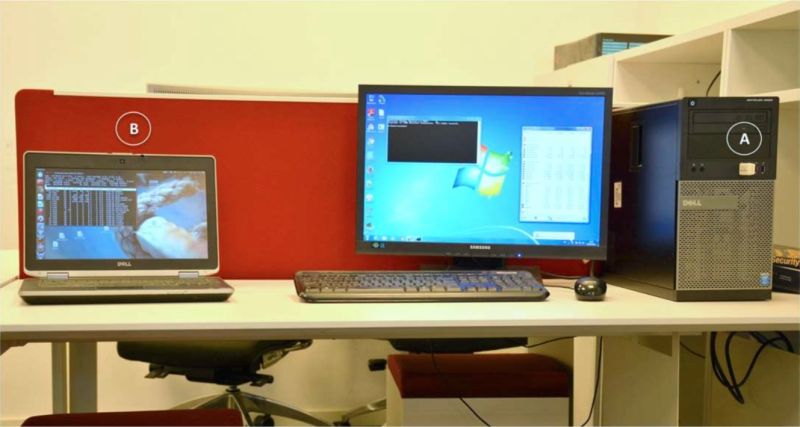
Enlarge / Illustration of USBee, in which an ordinary, unmodified USB drive (A) transmits information to a nearby receiver (B) through electromagnetic waves emitted from the drive data bus. (credit: Guri et al.)
In 2013, a document leaked by former National Security Agency contractor Edward Snowden illustrated how a specially modified USB device allowed spies to surreptitiously siphon data out of targeted computers, even when they were physically severed from the Internet or other networks. Now, researchers have developed software that goes a step further by turning unmodified USB devices into covert transmitters that can funnel large amounts of information out of similarly "air-gapped" PCs.
The USBee—so named because it behaves like a bee that flies through the air taking bits from one place to another—is in many respects a significant improvement over the NSA-developed USB exfiltrator known as CottonMouth. That tool had to be outfitted with a hardware implant in advance and then required someone to smuggle it into the facility housing the locked-down computer being targeted. USBee, by contrast, turns USB devices already inside the targeted facility into a transmitter with no hardware modification required at all.
"We introduce a software-only method for short-range data exfiltration using electromagnetic emissions from a USB dongle," researchers from Israel's Ben-Gurion University wrote in a research paper published Monday. "Unlike other methods, our method doesn't require any [radio frequency] transmitting hardware since it uses the USB's internal data bus."